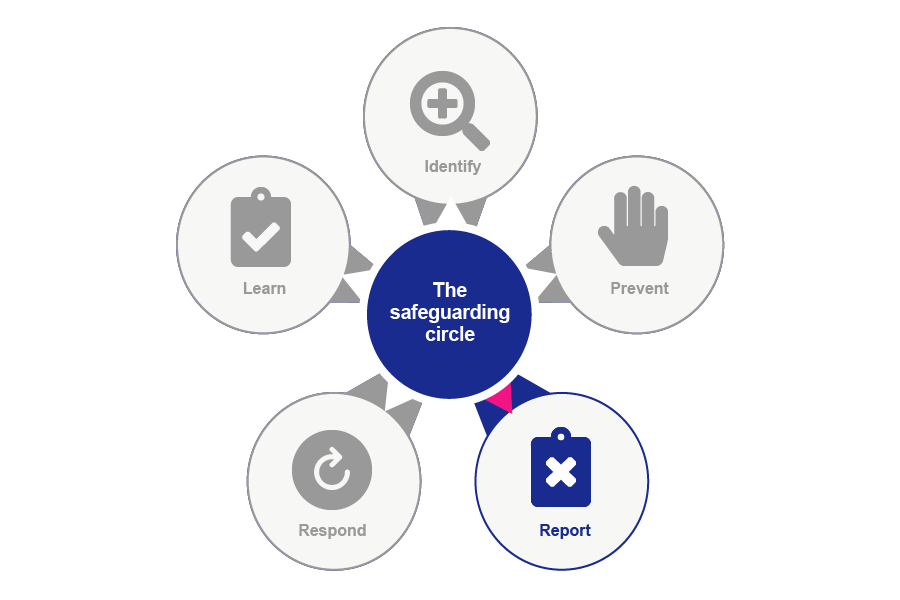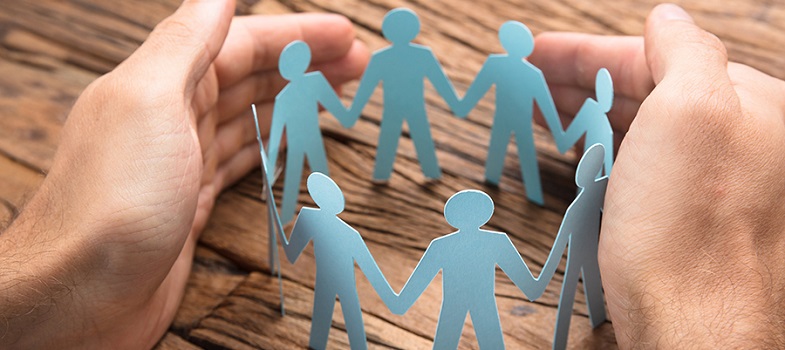Unit 4: Reporting
The reporting stage of the Safeguarding Cycle

Congratulations! You’re nearly half-way through this introductory course on safeguarding in the international development sector.
As this course has highlighted so far, safeguarding is a difficult and emotive issue, and there are many potential hurdles, myths and barriers to raising concerns, which can prevent them from being dealt with appropriately.
We have covered two parts of the cycle already:
- Identify – how to identify the different types of harm arising from the misuse of power, the indicators of that harm, and examining the vulnerability of children, adults and those who work with and for our organisations.
- Prevent – how to recognise risks to the people that we work with, how to develop a risk assessment to think of the safeguarding measures to mitigate that risk, how to recruit safely, how to develop a Code of Conduct, and how to use images and data of beneficiaries safely.
In this part of the course, we return to the Safeguarding Cycle and look at the ‘Report’ stage – what are the common barriers to reporting, how to overcome some of these common barriers, and what we, as Safeguarding Leads for our organisations, need to do to provide safe and confidential reporting mechanisms, support those who do raise concerns and support survivors/victims through the process.
What do we mean by ‘reporting’? This is when someone raises their concerns about someone else’s behaviour which they find concerning and they believe that person or someone else may be in danger of harm because of that inappropriate behaviour. Reports may come through informal discussions but must be formalised in a written form for next steps to take place.
In this unit, we will also look at the internal process within an organisation, the different ways that reports can arise (such as through a community-based reporting mechanism) and how organisations can make reports externally to relevant authorities, using a survivor-centred approach.
